Retailers Are Trying to Figure Out How to Deal With Cautious Consumers
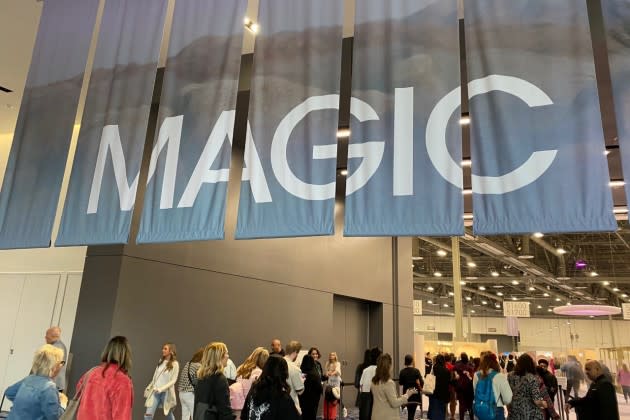
LAS VEGAS — A fast-moving hailstorm that quickly swept over Las Vegas on Valentine’s Day might have been an apt metaphor for the way the apparel industry is moving.
One moment it was fair weather and blue skies, the next it was chillingly cold, and then it was back to balmier, but not hot, temperatures.
More from WWD
That kind of volatile movement is exactly what retailers and clothing vendors at the various trade shows, held Feb. 13 to 15 in Las Vegas, have been experiencing for the last year.
Womenswear manufacturers and retailers at Project and MAGIC at the Las Vegas Convention Center and Las Vegas Apparel at the World Market Center said inflation woes, rising gas prices and a potential recession have keep consumers holding on to their wallets.
It all converged last summer when inflation clocked in at 9.1 percent in June and U.S. gas prices were approaching $5 a gallon that same month. In January, the situation softened slightly, as inflation dropped to 6.4 percent compared with last year and gas prices dipped to around $3.44 a gallon.
David Vered, chief executive officer of Los Angeles-based YMI Jeans, a juniors line of denim, said he saw the clothing sales market begin to soften in June. “Inflation was going through the roof, and I think a lot of people got spooked,” he said inside his booth at Project, where he has been exhibiting for years. “There was no free money from the government last year [compared to when the government handed out subsidies in 2020 and 2021 to survive the pandemic downturn], gas prices were higher and there was inflation. There were serious concerns about a recession.”
He said last year’s third and fourth quarters were challenging, but this year’s first quarter is slightly better, even though retailers are still holding big sales to get rid of their holiday inventory. “It is not great, but we are hoping for a pickup in the fall,” he said.
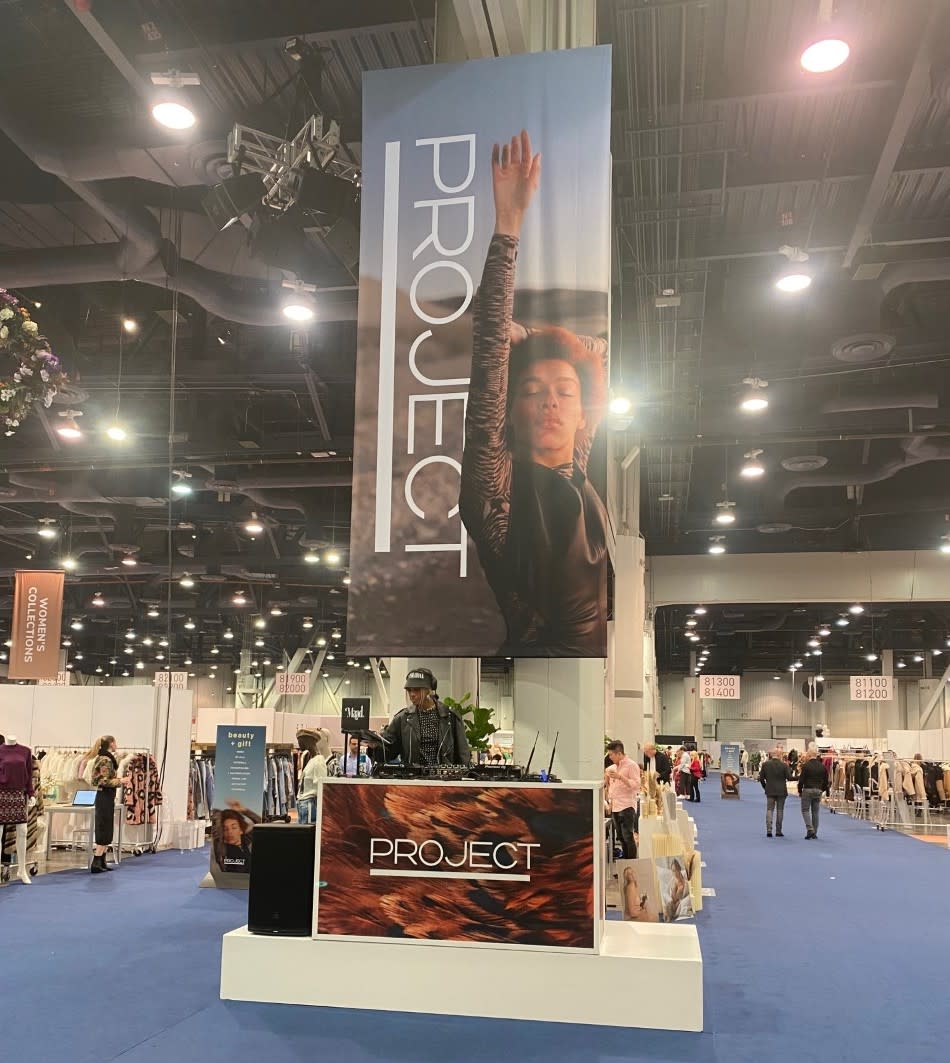
Not far away, in another Project booth, Elbert Cheng, CEO of LAmade, and his crew were busy talking with customers checking out the company’s knit clothing lines made in a Los Angeles factory with 50 workers.
Cheng said business was exceptional during the pandemic in 2020 and 2021 when retailers were having a hard time getting inventory out of China and other overseas countries, but now that foreign factories are easier to access and consumers are challenged with paying rent and buy food, his sales are down 30 percent to 40 percent over last year.
“It has to do not only with inflation, but that people are in that fear mode right now about what will happen in the future,” he said. “I tell my team, it’s like winter is still here, but hang in there for spring and summer.”
For some, the economic downturn has been more regional. At the Hale Bob booth filled with colorful print clothing, Cathy Cooley and Theresa King had two views on the retail world.
Cooley, the brand’s sales manager, sees a world with few economic worries when she travels through the South and Southeast where her sales are up significantly. “Consumers don’t seem that worried about the economy,” she noted. “People are relocating and moving to different places. The central cities are growing. It’s pretty different than in other places.”
Meanwhile, King, who is the West Coast sales representative, had a completely different outlook. “To me, the West is not depressed, but it still feels like a troubled state,” she said, noting that her retailers are buying closer to the season while in other areas of the country they are placing orders for fall.
Retailers too are experiencing a tale of two economies. If they were located in affluent areas, they were doing well. If they were in towns harder hit with inflation and unemployment, they were having to work more smartly for their money.
Lisa Jantzen, owner of Fashion Express Buying in New York, represents 45 specialty stores around the country. She said they are all located in affluent pockets of the country, such as Springfield, Illinois; Pacific Palisades in Los Angeles; Eau Claire, Wisconsin, and White Bear Lake, Minnesota.
“They all ended up the year ahead, every single one of them. December business wasn’t as great as they had anticipated, but the rest of the year made up for it,” she said. “And then shockingly, which is not generally the case, my stores said business in January was up over last year. That’s because a lot of those customers are getting out of Dodge during the winter and going south where the climate is warmer, and they need resort clothes.”
But that kind of consumer energy isn’t being felt by many retailers in less well-to-do areas around the country. Betsy Harrison, the owner of the 10-year-old online Betsy Boo’s Boutique in Fairfax, Iowa, is surprised her sales are flat over last year. “We’ve been pretty steady, but we haven’t seen any growth either, which is unusual for us because we are a multimillion[-dollar] online boutique,” she said. “Most of our sales seems to be going to Texas.”
Sholeh Veiseh, whose Down to Earth store has been in business for 32 years in Grand Haven, Michigan, said she has had to put a lot of clothing on sale to move inventory. “I’ve never had to put so many things on sale,” she said, admitting she might have overbought last year after having had her best sales year ever in 2021.
Now she is finding a choosier customer. “People are more conservative,” she observed. “I am finding they are being very deliberate in their choices now and buying things that last.”
Here are some standout brands from the show.
IPNG Design
Designer: Irem Petek Guven
Backstory: Guven founded her whimsical label in her native Turkey after studying at Bilkent University and receiving a master’s degree in media and fine art. It wasn’t until 2009 that she started selling her boho fashions made with intricately designed fabrics to European stores. In 2018, she branched out to the U.S., where her label is distributed out of San Diego by her stepbrother, Eren Koprulu. One of the key ingredients to the brand are the hidden details and the experimentation with fabrics, prints, balls, beads, feathers, crystals and designs that make it wearable art. Guven works with 10 employees and a handful of factories in Istanbul to create the arty collection.
Key styles: Intricate print-designed leggings are the company’s number-one bestseller, followed by pants and hoodies.
Retail prices: Prices range from $120-$180 for leggings to $390 for dresses.
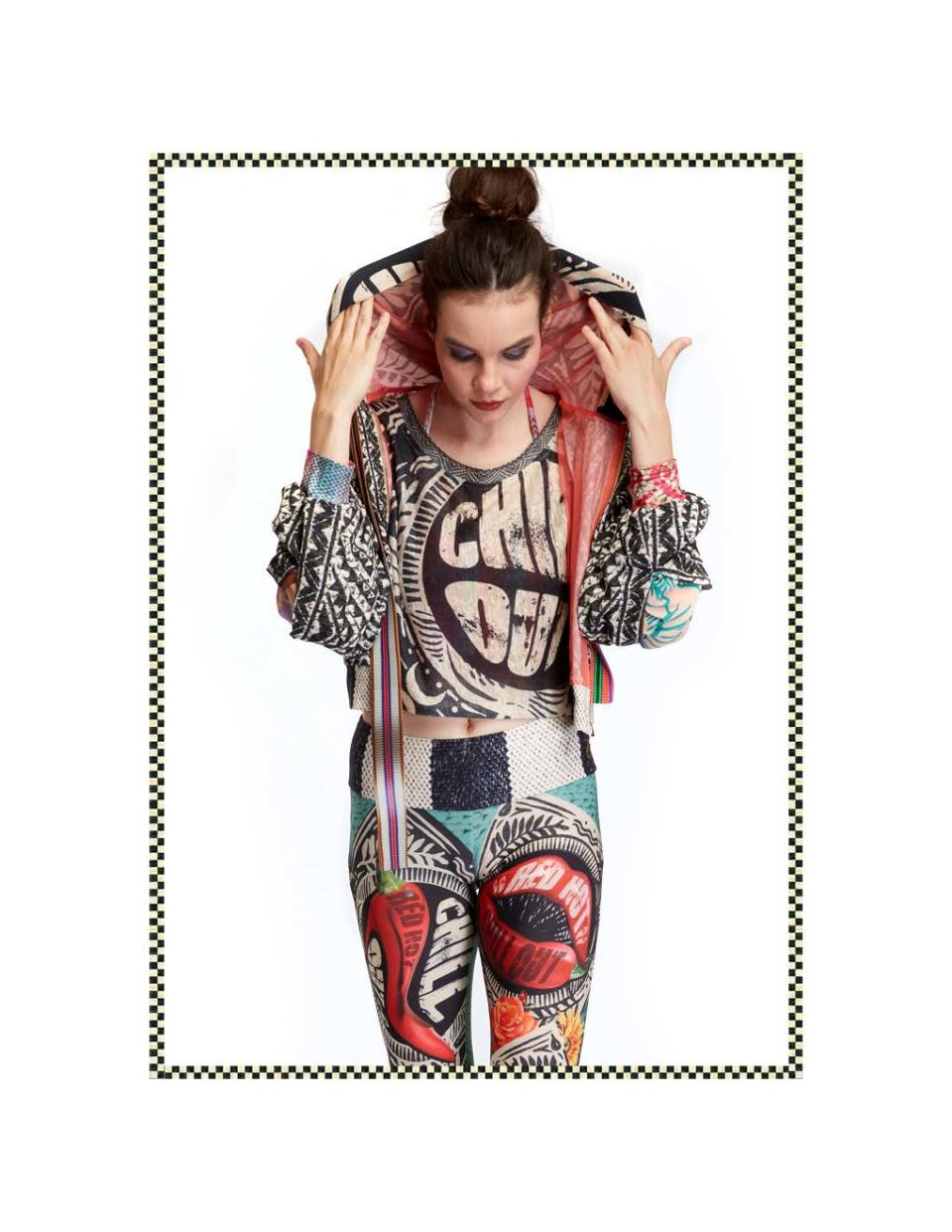
Talisman
Designer: Tilly Leighton
Backstory: Talisman is straight from the land down under. It is one of five brands housed under the parent company The Holiday Collective, launched by owner and creative director Rayna Hooper more than a decade ago. Talisman is the brand that takes its inspiration from the woman who is a globe trotter and enjoys discovering places far off the beaten path. The label is very print driven, with exclusive designs, Leighton said, and evokes a boho vibe. The collection is produced in India with hand stitching, hand beading and embroidery detailing on natural fabrics including cotton, rayon and viscose. The corporate headquarters are located just outside Adelaide, the capital of South Australia.
Key styles: Long, flowy dresses are popular for the free-spirited woman. The label is having a long-skirt moment and new additions include soft-shirt dressing and chunky sweaters. Tops with loose, flowy sleeves also are selling well.
Retail prices: Prices range from $88 to $248.
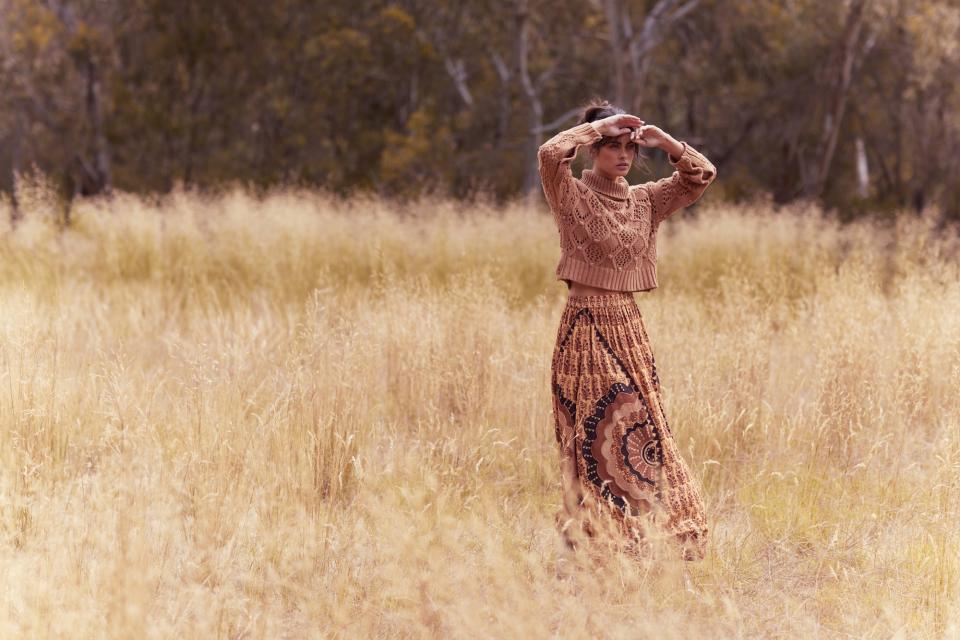
Rifò
Designer: Niccolò Cipriani
Backstory: While working at the Italian Agency for Development Cooperation in Vietnam, Niccolò Cipriani saw a lot of wasteful clothing manufacturing. With the goal of creating a sustainable, circular clothing company, he returned to Prato, Italy, 16 miles from Florence, to launch a venture that upcycles fabric leftovers into cashmere, silk and cotton fibers then made into sweaters, tops and now dresses. The company’s name means “We Make” in the Tuscan dialect. Since his company’s inception in 2018, he has also been on a journey to help Prato retain its textile-based economy, which has existed for hundreds of years with thousands of fashion companies located in the region.
Key styles: Sweaters and cardigans have been selling well. A recycled tie-dyed cashmere sweater is seeing a resurgence in popularity.
Retail prices: $160 to $290
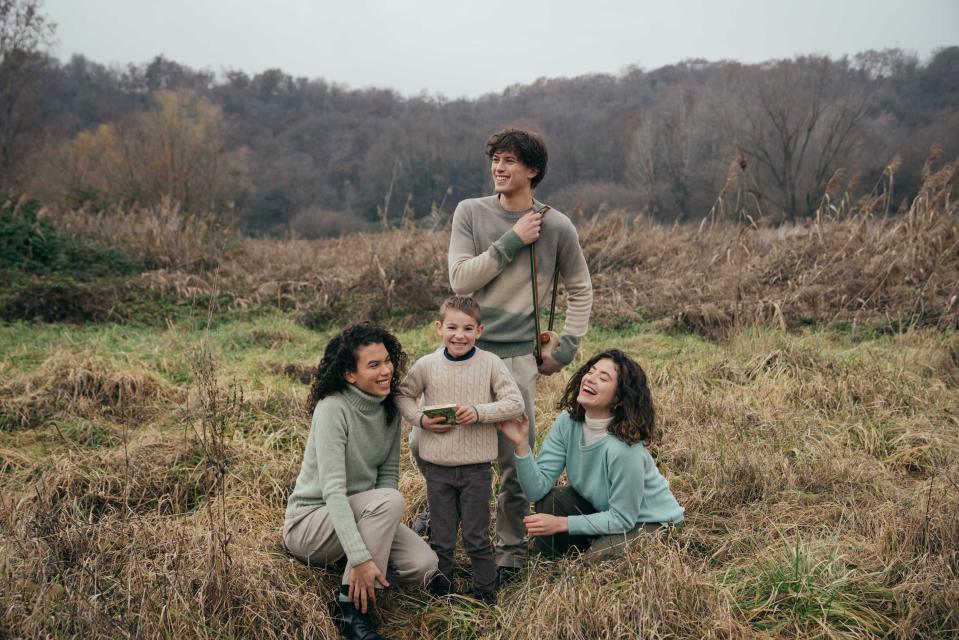
Flora-Bella
Designers: Robin Marin and Glenna Rimmer
Backstory: Flora-Bella was launched in 1998 as a luxury resort collection of hats, bags and cover-ups. Rimmer had been a sales representative for 15 years and Marin, her stepdaughter, studied at the Fashion Institute of Technology in New York. They decided to pool their talent to design and source raffia handbags and hats out of Madagascar and other overseas locations and produce embellished cover-ups out of India. The company is based in a 13,000-square-foot warehouse/office/showroom building in Dallas.
Key styles: A new boho-style raffia bag is selling briskly as well as any hat, handbag or clutch embellished with metallic fiber. Soft clutches with Druze or shell clasps are popular.
Retail prices: $75 to $150
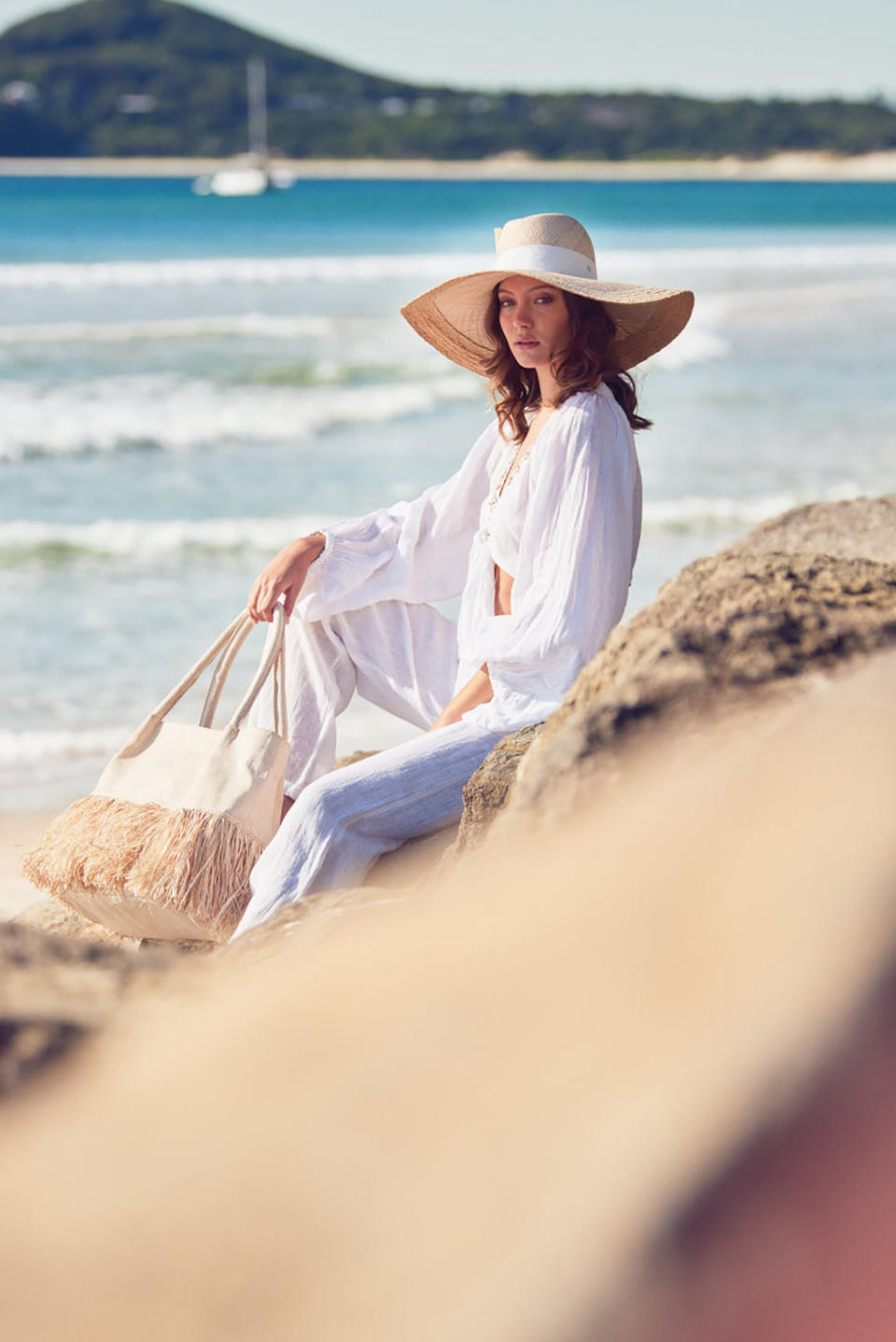
Best of WWD


